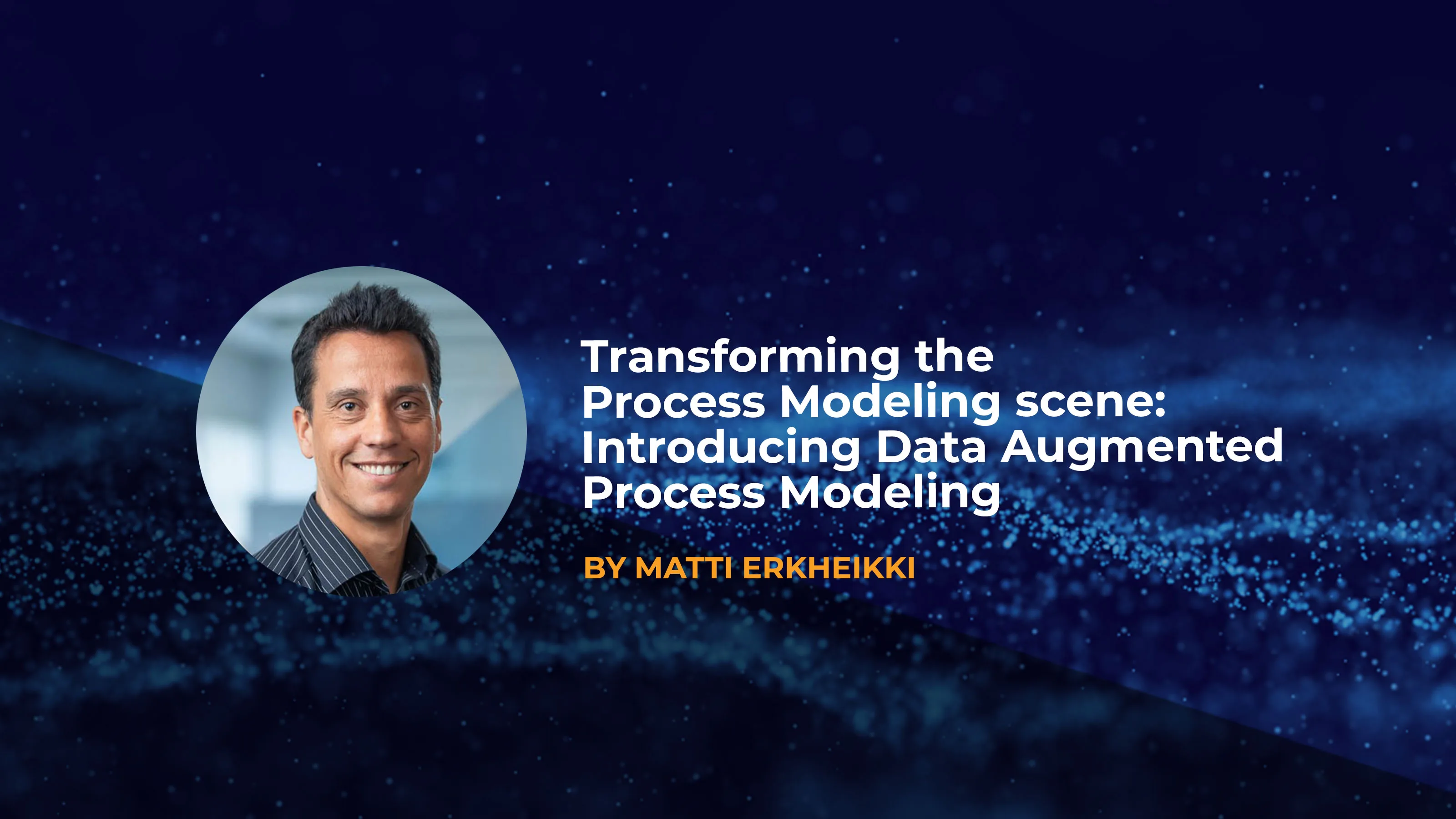5 Takeaways from Snowflake Summit 2025 That Shape the Future of Business
Why Snowflake Summit 2025 Signals a Turning Point for Process Mining I just returned from Snowflake Summit 2025, and it’s clear: we’re entering a new era of...
Process Mining
Modeling & Management
By Use Case
Digital Twin of an Organization
Insights & Inspiration
Guides & E-Books
Get Started with QPR

In today's challenging business landscape, efficiency is the key to staying competitive. At QPR, we're constantly evolving to meet the dynamic needs of our customers. In this blog, we introduce our latest innovation: Data Augmented Process Modeling. This innovation is part of our Digital Twin of an Organization suite, and it is set to transform Process Modeling landscape by seamlessly merging the best practices of Process Modeling and Process Mining methods.
Do you remember the first time you saw or used professional process modeling software? Maybe your first experience with it goes way back, and when you think about the latest experience, does it feel much different? In my case, it's been over two decades since I first used it. Sure, the tools have gotten sleeker, with more features, but the core idea remains: a canvas to create and a palette of symbols to express ideas.
Around 2010, there was a push to automate process modeling using transactional data from IT systems. While this vision was ambitious, it led to the emergence of process mining - a valuable tool providing deep insights into processes by analyzing operational data. Even with the emergence of process mining, traditional process modeling software remains a cornerstone among the essential tools for enhancing business processes.
We at QPR have had the luxury of having front row seats to closely follow the development of both process modeling and process mining landscapes. Having a solid understanding of market changes, customers’ needs as well as the challenges and shortcomings that different technologies have, we haven’t been happy with the way things are.
Read more: The ultimate process mining guide
Until very recently, Process Modeling and Process Mining methods have operated separately, even within the same company. This division means missed opportunities for collaboration, despite both aiming to boost efficiency and cut costs. Process modelers often lack real-time performance data and struggle with changes in specific processes. Meanwhile, process mining users are facing dynamic processes that don’t always leave clear digital footprints, limiting their analysis.
Bridging this gap is vital for accurately depicting current workflows and designing efficient new operating models. Last year we came up with something innovative and highly promising that is on its way to becoming the ultimate solution, combining the best of both worlds. This is what we call Data Augmented Process Modeling. We believe this is going to revolutionize the process modeling landscape.
Data augmented process modeling is a powerful integration of two key methodologies: process modeling and process mining. The benefits of data augmented process modeling are not limited to just solving the challenges of the existing methods and tools, but it has so much more to offer.
Process modeling software acts as a comprehensive tool for understanding, managing, and improving various aspects of an organization. However, traditional process modeling requires a lot of work, and manual maintenance of models is expensive. Also, a manually made model of the current organization state does not necessarily correspond to reality, in which case either a) the entire organization is collectively wrong or b) trust in process modeling descriptions can be lost.
With the help of the Data Augmented Process Modeling solution, the modeling work is done using transaction-level information found in the organization’s IT-systems. This leads to several benefits:
We would love to hear your thoughts!
Excited about revolutionizing process modeling through data augmentation? If yes, please reach out. We would love to hear your thoughts on how this new innovative approach for Process Modeling can be further enhanced and turned into a revolution.
It is about time; no software category should remain stagnant for decades.

Chief Product Officer

Why Snowflake Summit 2025 Signals a Turning Point for Process Mining I just returned from Snowflake Summit 2025, and it’s clear: we’re entering a new era of...

QPR Software's decision to power its process mining solution with the Snowflake Data Cloud has recently received a warm welcome in the US market. This...

We’re excited to announce that QPR ProcessAnalyzer is now available on the Snowflake Marketplace. As the only process mining software worldwide with native...

In today’s data-driven world, businesses are constantly seeking innovative ways to optimize their operations. Process mining stands out as a transformative...